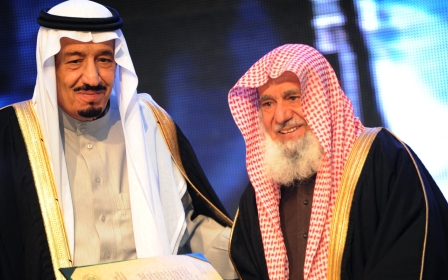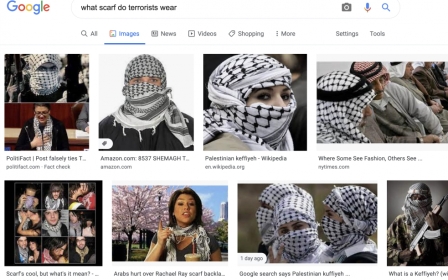Illustrations in The Economist's MBS article decried as 'xenophobic'

The Economist magazine has been criticised online after publishing illustrations described as racist for associating traditional Arab attire with bombs, bullets and other means of violence.
The article "MBS: despot in the desert" by Nicolas Pelham, takes a look at the Saudi Crown Prince Mohammed bin Salman (MBS), zooming in on his childhood, his ascension to power and the changes he has introduced in the kingdom.
The minimalistic two-dimensional illustrations incorporated throughout the article take recognisably Saudi and Arab iconography and morph this into more sinister images with undertones of violence.
The images, created by Israeli-born graphic designer Noma Bar, have been widely condemned online as pushing a xenophobic narrative of Arabs and the Middle East.
"Can you imagine the clothing of any other ethnic group being turned into a symbol with a bomb?" one social media user asked.
Stay informed with MEE's newsletters
Sign up to get the latest alerts, insights and analysis, starting with Turkey Unpacked
Some social media users have found issue with the imagery as the symbols used in the illustrations are not exclusively associated with MBS and hold significance to most Arabs.
While the red chequered headdress shown in the illustration is widely worn by Saudi Arabian men, it has been traditionally used in many other countries across the region.
Known as shemagh or hatta, it is worn as protection from sunburn, dust and sand.
It has become known as a symbol of national identity in Saudi Arabia and has high cultural importance.
Others were annoyed with wording in the article whereby Pelham suggests that Mohammed bin Salman controls "our oil," an inference described as "peak delusion".
The artwork of Noma Bar is known for including minimal detail and often carrying double meanings. It has been featured in The New Yorker, The Guardian and The New York Times among other publications.
Middle East Eye delivers independent and unrivalled coverage and analysis of the Middle East, North Africa and beyond. To learn more about republishing this content and the associated fees, please fill out this form. More about MEE can be found here.




